#Sputnik International
Text
What Are the Secret Societies Pulling Global Strings?

Media reports recently offered a rare glimpse into the shoulder rubbing and deal making that takes place at gatherings of Europe’s Most Secretive Organization – the Institut International d’Etudes Bancaires. However, sensitive issues related to global policymaking are hardly the prerogative of this gilded banking society.
The influential financial forum for exchanging ideas between Europe’s most connected financiers – The Institute International d’Etudes Bancaires (International Institute for Banking Studies, or IIEB) – met for one of its biannual secret meetings in October 2023, at Zurich’s Dolder Grand Hotel, the Financial Times reported. The exclusive and secretive networking that goes on at the luxury locations of the get-togethers of the IIEB forum, which is also an elite social club where bank bosses mingle with an array of guests ranging from presidents and prime ministers to royalty, was described as more exclusive than Davos.
The history of highly influential “Secret Societies” goes back far into history. Sputnik has taken a look at some of these mysterious private platforms.
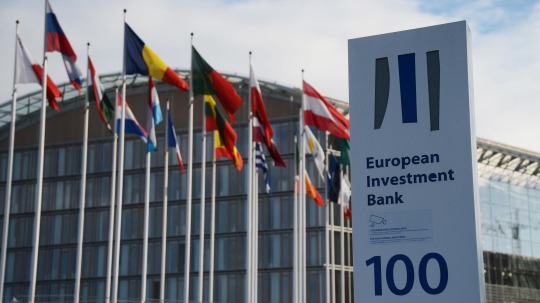
'Not Like Davos': European Bank Bosses 'Rub Shoulders' With VIPs at Secret Forum! The Institut International d’Etudes Bancaires (International Institute for Banking Studies, or IIEB) remains Europe’s most secretive organization, where bank bosses "rub shoulders" with a whole array of VIP guests, such as central bankers, presidents, prime ministers and royalty, the Financial Times (FT) has reported.
"This is not like Davos, where anyone can buy their way in. This really is exclusive," an unnamed IIEB member told the FT, referring to annual meetings of the World Economic Forum in the Swiss town Davos.
Twice a year, the IIEB brings together the heads of Europe’s biggest banks who discuss a number of sensitive issues related to global policymaking at posh hotels and royal palaces across the continent. Notably, the organization has no website, with membership, agendas and minutes not made public. On top of that, members are reportedly discouraged from sharing details of the discussions.
Apart from being the influential financial forum, the IIEB reportedly remains an elite social club where the bankers and their partners enjoy "gala dinners, private tours of historic landmarks and high-end shopping trips."
The IIEB was founded in Paris in 1950 by the heads of four European lenders: France’s Credit Industriel et Commercial, Union Bank of Switzerland, Societe Generale de Belgique and Amsterdamsche Bank.
The initial goal was to bolster international capital movements and tackle currency controls amid greater interference from national governments in the financial system. The late 1990s, however, saw the IIEB talks focus on the impact of the euro, the growing derivatives market and M&A deals between big banks.
— Oleg Burunov | February 12, 2024 | Sputnik International
Skull and Bones
One of the most famous of all Ivy League secret societies, steeped in mysterious rituals and symbols, is Skull and Bones. This society of senior (fourth-year undergraduate) students at Yale University in New Haven, Connecticut, was founded in 1832 by William Huntington Russell and Alphonso Taft. The club chooses 15 new members annually, with those selected referred to as Bonesmen and Boneswomen. All of the members are sworn to secrecy. Initially, it was created for members of the richest and most influential families in the United States. Many members went on to become wealthy and famous business leaders of the world, with the Vanderbilts and Rockefellers Having Reportedly All Been Members of the Society. Three members – William Howard Taft, George H.W. Bush, and George W. Bush – Went on to Become US presidents.

In this Sept. 2003 File Photo, Yale's Secret Society, Skull and Bones' Clubhouse or "Tomb" as it is known, is seen on the Yale University Campus in New Haven, Connecticut. © AP Photo/Bob Child
Bohemian Club
Originally founded in 1872 by a group of San Francisco journalists, writers, actors, and lawyers as a fellowship of those positioning themselves as “free thinkers and liberals,” the Bohemian Club went on to become one of the most exclusive men’s clubs (or secret societies) in the US. While membership lists are guarded, it is known that writers like Mark Twain and Jack London were among its early joiners, with Henry Kissinger, George H. W. Bush, Ronald Reagan, and CEOs of many Fortune 500 companies believed to have been in attendance at the gatherings.
The club has a vast property known as Bohemian Grove, where the elite are said to gather once a year to socialize and share their thoughts on "running the world."

War Criminal, Republican Presidential Hopeful and Texas Governor George W. Bush speaks to members and friends of the Charleston Rotary Club during a campaign sweep of South Carolina Wednesday, August 25, 1999 in North Charleston, South Carolina. © AP Photo/Lou Krasky
Rotary Club
The Rotary Club (or Rotary International), was founded in 1905 as the world’s first service club. At the time, attorney Paul P. Harris met with three of his business acquaintances in Chicago, Illinois. The name “Rotary” was chosen in reference to the practice of meeting in rotation at the members’ various places of business. Now the international non-governmental association unites Rotary clubs around the world. Rotary clubs position themselves as non-religious and non-political “charitable organizations” open to everyone regardless of nationality, race, religion, or political views. There are over 46,000 of these “clubs” around the world. The main mottos of Rotary International are “Service Above Self” and “One Profits Most Who Serves Best.”
Council on Foreign Relations
Established in 1921, the Council on Foreign Relations (CFR), headquartered in New York City and with offices in Washington, DC, is a branch of the Carnegie Endowment for Universal Peace (added by Russia's Ministry of Justice in 2023 to the list of "foreign agents.") Specializing in US foreign policy and international relations, it is believed that its creator was the most powerful American banker, J.P. Morgan. At the time of its establishment, the US Senate had blocked then-President Woodrow Wilson’s bid to have America join the League of Nations. The CFR’s invitation-only members, which have included senior politicians, numerous secretaries of state, CIA directors, bankers, lawyers, professors, corporate directors and CEOs, and senior media figures, must be US citizens or permanent residents and nominated by a current member for consideration to join the organization.
The task of the council, passed off as an American think tank, is believed to be to exert “Behind the Throne" power to Shape the World to Washington’s Economic and Political Liking. Numerous top US government officials are thought to have been drawn from its ranks. After WW2, the council was turned into a major strategic center. Incidentally, the initiative to launch a “preemptive” nuclear strike on the Soviet Union was conceived in the bowels of this organization. Members of the council have included many Pentagon and NATO generals, as well as top figures from the CIA and other intelligence agencies. This same council has included such ideologists as Allen Dulles (from 1933 to 1944 - secretary of the council, from 1945 to 1950 - president of the council), Zbigniew Brzezinski (director of the council from 1972 to 1977), Henry Kissinger (board director from 1977 to 1981), and Richard Pipes.
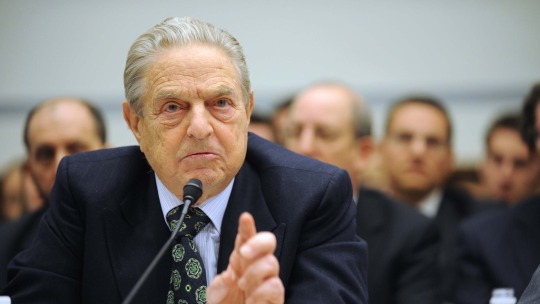
George Soro
Bilderberg Club
The secretive Bilderberg Club is an annual off-the-record meeting of North American and European elites established in 1954. It takes its name from the Hotel de Bilderberg in Oosterbeek, the Netherlands, where its members first convened at the invitation of Prince Bernhard of Lippe-Biesterfeld. The enigmatic Polish scholar Jozef Retinger was one of its founders. The aim was to bring closer the elite of North America and Western Europe beyond the political spotlight, offering a "debating society" venue. The organization consists of at least 150 members who are invited by its "steering committee." The forum brings together analysts, politicians, financiers, and intellectuals. One third of the club's members are North Americans, the rest are Europeans. Since the location, participants, and topics of discussion were kept under wraps, conspiracy theories swirled, claiming that the Bildelberg Group is a ‘shadow world government’ that rules the world.
Club of Rome
The Club of Rome was founded at Villa Farnesina in Rome in April 1968 by Aurelio Peccei, an Italian industrialist, and Alexander King, a Scottish scientist. Scientists, political and public figures come together to brainstorm all manner of tactics and strategies here.
Trilateral Commission
The US Council on Foreign Relations played a fundamental role in the formation of the Trilateral Commission in 1973 at the initiative of the Bilderberg Club. The idea of such an organization was articulated by Brzezinski in his book Between Two Ages: America's Role in the Technetronic Era.
Its name “Trilateral Commission” reflects the fact that from the very beginning, it was conceived as an organization in which “the best minds in the world” (as per its founder David Rockefeller), representing the US, Western Europe, and Japan (now including all of Asia Pacific) could discuss problems and "decide the fate of the world." President of Chase Manhattan Bank David Rockefeller ( member of the Bilderberg Steering Committee and inspirer of the US Council on Foreign Relations) became president of the Trilateral Commission, and Zbigniew Brzezinski became executive director. The commission was tasked with encouraging cooperation between the elites of the US, Europe, and Japan. To best coordinate activities, three headquarters were created in Washington, Paris, and Tokyo. Today, the annual meeting of Trilateral Commission members rotates among the three regions: North America, Europe, and Asia-Pacific. Annual plenary sessions include prominent politicians, bankers, and directors of major enterprises, acting as an 'advisory body' to world governments.
Club of Budapest
The Club of Budapest was founded in 1993 by Hungarian-born philosopher Ervin Laszlo, a member of the Club of Rome. The idea of the club for people of the arts, literature and culture was presented as a “democratic” venue for thrashing out “a new way of thinking” to face 21st century challenges. Its touted goal is to create “global cultural consciousness.” It boasts branches in 17 countries.

Ukrainian President Petro Poroshenko (Second Left) and George Soros (Right), Founder and Chairman of the Open Society Foundations, during a meeting in Kiev. © Sputnik/Nikolay Lazarenko/Go to the Mediabank
World Economic Forum
The annual World Economic Forum (WEF) gathering in Davos, Switzerland, is renowned as an exclusive club for the rich and powerful. The WEF has been led since its founding in 1971 by 82-Year-Old Swiss Economist Klaus Schwab, author of The Fourth Industrial Revolution and COVID-19: The Great Reset.
The international non-governmental and lobbying organization typically holds its most highly-anticipated event annually at the Swiss alpine resort town of Davos. Gaining entry to the Davos event reportedly costs about $28,000.
While the WEF is touted by some as a platform for decision-makers to discuss global problems, the growing chorus of critics has slammed the forum for an alleged lack of financial transparency, and for turning into a technocratic globalist elitist club seeking to dictate rules for the rest of the world. In 2023, several of the world's most influential leaders opted to skip the WEF, including Russian President Vladimir Putin, Chinese President Xi Jinping, French President Emmanuel Macron, and US President Joe Biden.
Even the notorious influential philanthropist George Soros, a 93-year-old billionaire who has been a Key Figure of Western Soft Power Campaigns for decades, spending vast sums of money to help install US-aligned political leaders in Eastern Europe, also skipped the event due to an unspecified “unavoidable scheduling conflict.”
— Svetlana Ekimenko | Sputnik International | February 17, 2024
#Economy | World 🌎 Economy | Davos| World 🌎 Economic Forum | War Criminal George H.W. Bush | George Soros#World Economic Forum in Davos#Secret Societies#Sputnik International
0 notes
Text
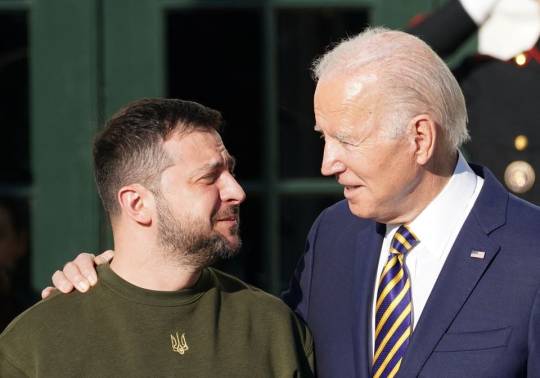
🇷🇺🇺🇲 🚨 SPUTNIK JOURNALIST BARRED ENTRY FROM BIDEN-ZELENSKY VISIT, DESPITE PROPER CREDENTIALS 🪪
Sputnik correspondent Pavel Zakovorotny was not allowed into the Biden-Zelensky press conference hall on the White House grounds.
The journalist registered for the event a day in advance, his name was on the list, but a White House representative told the correspondent that there were no empty seats in the hall.
At the same time, he was the only one who didn’t have enough space - dozens of other journalists waiting at the entrance for the event to start were able to get into it.
Via@RiaNovosti
#source
@WorkerSolidarityNews
#russia#united states#russia news#us news#politics#geopolitics#news#world news#global news#international news#breaking news#current events#sputnik#censorship#us censorship#politics news#political news#global politics#international affairs#international politics#journalism#journalistic censoriship
7 notes
·
View notes
Text

LaRue Burbank, mathematician and computer, is just one of the many women who were instrumental to NASA missions.
4 Little Known Women Who Made Huge Contributions to NASA
Women have always played a significant role at NASA and its predecessor NACA, although for much of the agency’s history, they received neither the praise nor recognition that their contributions deserved. To celebrate Women’s History Month – and properly highlight some of the little-known women-led accomplishments of NASA’s early history – our archivists gathered the stories of four women whose work was critical to NASA’s success and paved the way for future generations.
LaRue Burbank: One of the Women Who Helped Land a Man on the Moon
LaRue Burbank was a trailblazing mathematician at NASA. Hired in 1954 at Langley Memorial Aeronautical Laboratory (now NASA’s Langley Research Center), she, like many other young women at NACA, the predecessor to NASA, had a bachelor's degree in mathematics. But unlike most, she also had a physics degree. For the next four years, she worked as a "human computer," conducting complex data analyses for engineers using calculators, slide rules, and other instruments. After NASA's founding, she continued this vital work for Project Mercury.
In 1962, she transferred to the newly established Manned Spacecraft Center (now NASA’s Johnson Space Center) in Houston, becoming one of the few female professionals and managers there. Her expertise in electronics engineering led her to develop critical display systems used by flight controllers in Mission Control to monitor spacecraft during missions. Her work on the Apollo missions was vital to achieving President Kennedy's goal of landing a man on the Moon.
Eilene Galloway: How NASA became… NASA
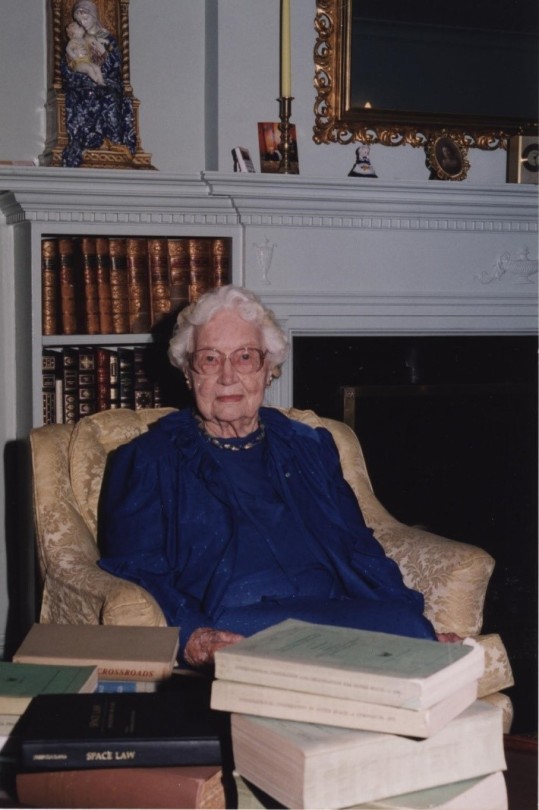
Eilene Galloway wasn't a NASA employee, but she played a huge role in its very creation. In 1957, after the Soviet Union launched Sputnik, Senator Richard Russell Jr. called on Galloway, an expert on the Atomic Energy Act, to write a report on the U.S. response to the space race. Initially, legislators aimed to essentially re-write the Atomic Energy Act to handle the U.S. space goals. However, Galloway argued that the existing military framework wouldn't suffice – a new agency was needed to oversee both military and civilian aspects of space exploration. This included not just defense, but also meteorology, communications, and international cooperation.
Her work on the National Aeronautics and Space Act ensured NASA had the power to accomplish all these goals, without limitations from the Department of Defense or restrictions on international agreements. Galloway is even to thank for the name "National Aeronautics and Space Administration", as initially NASA was to be called “National Aeronautics and Space Agency” which was deemed to not carry enough weight and status for the wide-ranging role that NASA was to fill.
Barbara Scott: The “Star Trek Nerd” Who Led Our Understanding of the Stars
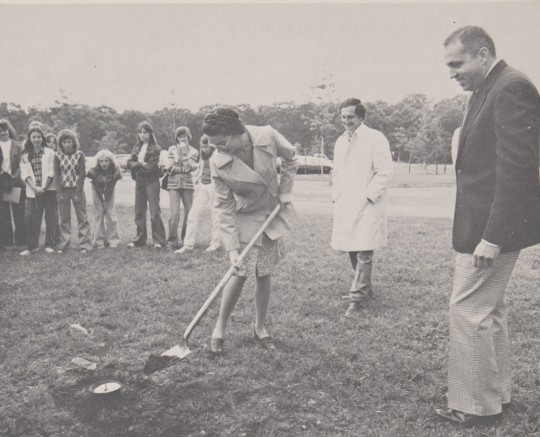
A self-described "Star Trek nerd," Barbara Scott's passion for space wasn't steered toward engineering by her guidance counselor. But that didn't stop her! Fueled by her love of math and computer science, she landed at Goddard Spaceflight Center in 1977. One of the first women working on flight software, Barbara's coding skills became instrumental on missions like the International Ultraviolet Explorer (IUE) and the Thermal Canister Experiment on the Space Shuttle's STS-3. For the final decade of her impressive career, Scott managed the flight software for the iconic Hubble Space Telescope, a testament to her dedication to space exploration.
Dr. Claire Parkinson: An Early Pioneer in Climate Science Whose Work is Still Saving Lives

Dr. Claire Parkinson's love of math blossomed into a passion for climate science. Inspired by the Moon landing, and the fight for civil rights, she pursued a graduate degree in climatology. In 1978, her talents landed her at Goddard, where she continued her research on sea ice modeling. But Parkinson's impact goes beyond theory. She began analyzing satellite data, leading to a groundbreaking discovery: a decline in Arctic sea ice coverage between 1973 and 1987. This critical finding caught the attention of Senator Al Gore, highlighting the urgency of climate change.
Parkinson's leadership extended beyond research. As Project Scientist for the Aqua satellite, she championed making its data freely available. This real-time information has benefitted countless projects, from wildfire management to weather forecasting, even aiding in monitoring the COVID-19 pandemic. Parkinson's dedication to understanding sea ice patterns and the impact of climate change continues to be a valuable resource for our planet.
Make sure to follow us on Tumblr for your regular dose of space!
#NASA#space#tech#technology#womens history month#women in STEM#math#climate science#computer science
2K notes
·
View notes
Text
Russia’s many firsts in space race
Russia’s many firsts in space race
Since the launching of the first satellite – Sputnik 1 – to space in the Cold War era on October 4, 1957, the Soviet Union has achieved many of the “world’s first” records in the space race against the US.
The US was also working on its own satellite at the same time, and took no time to retaliate, establish the National Aeronautics and Space Administration (Nasa) and allocate more budgets to…

View On WordPress
#International Space Station (ISS)#Mir#Russia#Russian Space Agency Roscosmos#Space Race#Space Science#Sputnik 1#USA
0 notes
Note
The hellsite is being a hellsite again and won't alert me when you post despite me having notifs on :( Anyway, I have some late night, migraine-induced rambles about Cowboy Nikto to tell you!
So, in the main AU I don't see Nikto and Chook as having any kids - they're both busy people with their respective jobs, and caring for Sputnik is nearly as taxing as looking after a toddler. Not to mention Nikto's mental health issues that can make some days stressful for them both. Especially when he has a bad day. It's just not something that would fit in well with their lifestyle.
If they ever did have kids, it would have to be an AU of this current AU. But I was thinking, purely for shits and giggles, it would be hilarious if they had a son about Frog's age, and if the two got along like in the Fae AU. But potentially even funnier, would be Ghost and Goose coming to pick up their girl, only for Frog to wander up to them, holding Nikto's kid's hand in her own and informing them that "this in my boyfriend, we're gonna get married," in just the most serious voice. Like all toddlers, they'll forget about it and move on in like a day or two, but for a hot second there Ghost is having a minor heart attack.
I'm a little worried about the hellsite... I have a few posts saying that reblogs are turned off when I check the comments but then they're fine when I check on my blog. Idk what's going on, I don't think I'm shadow banned again but I have no idea.
Ghost would panic but he'd try to play it cool, not let it show that he is internally screaming at the thought his daughter might marry anyone let alone Nikto's son. This is almost as bad as when she was talking to Konig's son. Ghost's assumption is that Frog is simply too cute for her own good, he will not be doing anything to change this, she is an adorable toddler. How is he supposed to deal with his daughter actually dating someone in the future? Doesn't she know how many insane and dangerous people are settling down and having kids in this black hole of a town???
Goose's assumption is that Frog is bossy as hell(correct) and might think that all relationships are "married" because all the folks around her are married. Mostly she's just happy for the excuse to hang out with Chook. Pat, pat, on Ghost's shoulder because he's been staring at Frog, motionless, for the better part of a few minutes after that announcement. She's gotta lean over and tell him "she's not serious, she doesn't know what that means."
#ghoul speaks#simon ghost riley#oc: goose#my engagement is way down as well#so maybe I'm banned again#that's fun#I love nikto and chook they're cute
32 notes
·
View notes
Text
A Russian disinformation campaign is deploying everything from high-ranking lawmakers and government officials to lifestyle influencers, bloggers, and powerful state-run media outlets to stoke divisions in the United States around the Texas border crisis.
WIRED has also obtained exclusive access to data from two separate disinformation research groups that demonstrate a coordinated Russian effort on Telegram and X (formerly Twitter) to sow discord by pushing the narrative that the US is heading for civil war.
The disinformation campaign began in earnest in late January, and expanded after Russian politicians spoke out when the US Supreme Court lifted an order by a lower court and sided with President Joe Biden’s administration to rule that US Border Patrol officers were allowed to take down razor-wire fencing erected by the Texas National Guard. Days later, when Texas governor Greg Abbott refused to stand down, former Russian president and prime minister Dmitry Medvedev, who is currently deputy chairman of Russia’s Security Council, claimed that the Texas border dispute is “another vivid example of the US hegemony getting weaker.”
“Establishing a People’s Republic of Texas is getting more and more real,” Medvedev added on X, claiming the situation could lead to “a bloody civil war which cost thousands upon thousands of lives.”
Others chimed in: “It’s high time the American president, following in his predecessor Obama’s footsteps, declares ‘Texas must go’ and assembles an international coalition to liberate its residents in the name of democracy,” Russian Foreign Ministry spokesperson Maria Zakharova wrote on Telegram. Russian lawmaker Sergey Mironov even offered Texas help: “If necessary, we are ready to help with the independence referendum. And of course, we will recognize the People’s Republic of Texas if there is one,” Mironov wrote on X.
After these comments, state media, influencers, and bloggers quickly got involved. Over the past two weeks, state-run media outlets like Sputnik and RT have called the dispute between the Texas governor and the Biden administration a “constitutional crisis” and an “unmitigated disaster,” while one Sputnik correspondent posed a video on the outlet’s X account, stating: “There’s a big convoy of truck drivers going down there. So, it can very easily get out of hand. It can genuinely lead to an actual civil war, where the US Army is fighting against US citizens.”
On Telegram, there were clear signs of a coordinated effort to boost conversations around the Texas crisis, according to analysis shared exclusively with WIRED by Logically, a company using artificial intelligence to track disinformation campaigns.
“The idea of targeting highly contentious US domestic issues and amplifying them via their own channels—it’s the standard Russian playbook for disinformation,” Kyle Walter, director of research at Logically, tells WIRED.
The channels on Telegram include those run by TV presenters, bloggers who report on Russia’s military, and social media influencers, each of whom have hundreds of thousands of followers. One of the accounts, belonging to Russian TV personality Vladimir Solovyov, has more than 1.2 million followers, and he claimed the “the US was close to civil war.”
When I'm trying to identify disinformation operations in the wild I need to understand the initial signals and ideas that Russian state media and influencers are sharing,” Walter tells WIRED. “Russian Telegram channels just blew up overnight, and started really dialing into messaging specifically about the possibility that Texas could be an independent state, the possibility that there could be a US civil war.”
Russian state media echoed these claims, and published a flood of articles with headlines featuring phrases like “Civil War 2.0.” They also spread conspiracies claiming that “US elites will keep the border wide open.”
Last week, the Russian Telegram channels and state media also began to boost the ‘Take Our Border Back’ convoy led by far-right extremists, sovereign citizens, QAnon adherents, and anti-vaccine conspiracists who traveled from Virginia to the border in Texas in support of Abbott. “Fears of FBI Spying on ‘Take Our Border Back’ Convoy Show US Democracy Dying,” one Sputnik headline read last week.
The convoy’s official channels on Telegram were also infiltrated by Russian accounts, though some were removed or called out by the US-based members of the group. “They are in every single group on any social media,” one member who calls themselves ‘Eat Putin’s Heart’ wrote on Telegram in response to a question about why Russians were members of the group. “They want a civil war/chaos more than anything. What’s bad for America is great for Russia.”
Researchers at Antibot4Navalny, a Russian anti-disinformation research group that has been closely tracking a Russian disinformation network known as Doppelganger on X, shared data exclusively with WIRED that shows a network of bot accounts previously linked to the Doppelganger campaign has been deployed online in the past week to discuss the Texas issue.
While previous Doppelganger campaigns shared links to fake websites designed to look like legitimate ones but with fake articles, this campaign linked to websites run built and maintained by the Doppelganger operatives to push narratives to suit their needs. One article, for example, appeared on a fake site called Warfare Insider, and stated that Texas “has become a battleground symbolizing the clash between state and federal authorities.
In recent days, the bots have also been responding to posts unrelated to Texas by referencing the situation at the border.
Some experts have been linking this campaign to previous Russian disinformation campaigns. Already, it echoes the incident when Russian operatives were accused of organizing an anti-immigrant rally and a counterprotest event to their own rally in Texas ahead of the 2016 election.
Caroline Orr, a behavioral scientist and postdoctoral researcher at the University of Maryland who tracks disinformation online, wrote in her newsletter Weaponized that the term “Free Texas” in Russian was being “used extensively [on X], and nearly exclusively, by Russian accounts associated with the notorious Internet Research Agency, which housed the 2016 election interference operation.”
The IRA was a Kremlin-linked troll farm launched in St. Petersburg that gained notoriety for its role in attempting to interfere in the 2016 US presidential election. It was run by Yevgeny Prigozhin, a close ally of Russian president Vladimir Putin who also ran the Wagner mercenary group until he died in a mysterious helicopter crash last year.
There also appear to be a number of Russian accounts on X posing as pro-Texas groups, in another echo of 2016 when an account that claimed to be run by Tennessee Republicans was outed as Russian-run.
One of the suspect accounts is the Texan Independence Supporters, which has already been called out for spelling errors and constantly referencing Ukraine and Russia. On Sunday, the account claimed “we are a Texan organization, not Russian. We can definitely assure ya’ll [sic] that we’re not Russian.”
Before this, Russia had already been accused of dipping its toe in the 2024 US presidential election—including boosting Robert F. Kennedy Jr.’s campaign—but Walters says the effort to push the Texas crisis narrative marks an escalation in the Kremlin’s efforts.
“This is the first thing that I see as a potentially significant concern to look out for, because I think it is an area [where] they could fairly easily cause more divide in the US,” he says.
16 notes
·
View notes
Text
new intro post !!
(intro inspired by @frogofalltime) (picrew by @reelrollsweat)

name donnie
pronouns he/they/any
age/birthday 22 [25 Jan 2002]
languages I'm fluent in English and know conversational Spanish
special interests undertale, teenage mutant ninja turtles
current hyperfixation superfund sites (I’m working on a project about superfund sites rn!!)
favorite movie(s) ratatouille, mutant mayhem
favorite show(s) rise of the teenage mutant ninja turtles, spongebob
favorite musicians hozier, poor man’s poison, will wood
current favorite songs "1985" by bo burnham, "too sweet” by hozier, “francis forever” by mitski, “here comes a thought” by sputnik spyglass
about me
hello! I'm donnie, and I'm a trans man. I'm currently in my 4th year of university and will likely need to take a fifth year. I study environmental geoscience, and I'm hoping to get my master's degree after I finish my undergrad. I either want to study climatology, hydrology, or switch career plans entirely and get a doctorate in some kind of psychology or sociology.
my hobbies include crocheting, baking, and writing fanfics and poetry. my favorite things to crochet are cardigans and sweaters, I love to bake dessert breads like banana bread and pumpkin bread, and what I write fanfics about is REDACTED. I have a sewing machine but I've been too nervous to actually try to learn to sew something.
I'm buddhist. I was first introduced to the beliefs of the religion by my fiance's family, who invited me to pray before we left their house everyday and pray when getting back. my fiance and I are both buddhist, though truly we don't do much because our apartment is too small to have a shrine that would actually be facing the correct direction. we pray occasionally, but our practice is more internal than external.
some fun facts about me!
I have 2 cats and a dog (my dog is smaller than both my cats)
I have a collection of TMNT action figures
I'm left handed!
I'm autistic (hence the special interests)
I get nervous and have a hard time making friends, but I would love to try to meet some fellow queer people on here! please feel free to send me a dm, I may get a little nervous and not respond right away but I will do my best to actually respond!
25 notes
·
View notes
Link
Pluto with a super-cryovolcano? Why not! All the elements are there, just not in the way we normally think of volcanoes. And, cryovolcanoes are the reason why Pluto’s surface looks the way it does. A recent research paper explains why Pluto could be the home of the latest supervolcano discovery in the Solar System. Planetary scientist Dale Cruikshank and a group of colleagues have been studying a strange feature on Pluto called Kiladze Crater. Its existence raises a lot of questions about what’s happening inside Pluto to create this weird landscape. The researchers recently released a paper exploring this region and offering an explanation for its appearance. Kiladze (circled) is likely a super cryovolcano on Pluto. It contains fault structures and collapse pits that formed through cryovolcanism. The crater (or caldara) shape looks distorted, likely from internal stresses and tectonic shifting. Courtesy New Horizons mission (labeled by author). Interior Action Drives Cryovolcanism The team suggests strongly that Kiladze is a super cryovolcano. Cryovolcanism is the process that sends ice “lava” to the surface of Pluto. We’ve seen it across the outer solar system, in some of the moons of Jupiter, Saturn, Uranus, and Neptune. Like its “sister” form of volcanism here on Earth, some kind of heating melts mantle materials, which can eventually escape to the surface. We’re used to seeing rocky lavas. However, ice and water act as “lava”, too, if conditions are just right. Cryvolcanism at Enceladus, a moon of Saturn. This Cassini narrow-angle camera image looks across the south pole of Enceladus and its geysers of material. Credit: NASA/JPL-Caltech/Space Science Institute And, that’s where Pluto comes in because the conditions are ripe for cryovolcanism. During the New Horizons Pluto flyby in 2015, several features drew the attention of scientists as possible cryovolcanic regions. That included a region called Virgil Fossae. It lies to one side of Sputnik Planitia, a prominent heart-shaped surface feature on Pluto. Kiladze lies at the top of the right “lobe” of the heart and its appearance really had Cruikshank and his colleagues debating its cause. Mapping Kiladze New Horizons acquired both images and spectroscopy of Pluto during its flyby in 2015. One thing that became immediately evident about Kiladze is that there’s water ice scattered around it. That’s unusual because methane and nitrogen ice cover most of the surface of Pluto. So, a patch of water ice surrounding a strange-looking feature seemed unusual. Not only that, but the ice contained an ammonia compound. Some kind of activity brought the water-ammonia mixture up from deep below the surface. But what? A labeled map of Pluto’s surface features, including the Virgil Fossae region (another cryovolcanic region) on the planet. Kiladze lies just off the right “lobe” of Sputnik Planitia and to the left of Sleipnir Fossae in this map. Courtesy New Horizons/NASA. According to Cruikshank, heating is the culprit. “For Pluto, internal heat is also expected to be the driver for volcanism seen in some places at the surface, but we don’t know if there is a subsurface global ocean of water plus various chemicals, or simply pockets of water plus chemicals left over from the time Pluto formed and had a hot interior,” he said. “This is a mystery for the next generation of planetary scientists to solve.” Beyond volcanism, Cruikshank and his team considered the possibility that Kiladze is some kind of distorted impact crater. So, they also examined the surface feature for signs of some alternate origin. Aside from the surface materials, the morphology of the region shows evidence of tectonic activity. There are faulted structures and collapse pits and its overall crater shape is distorted. That doesn’t necessarily point to an impact origin, so what happened at Kiladze? The answer lies in Pluto’s interior structure. Pluto, from the Inside Out Pluto is an icy body wrapped around a rocky core. Much of the “bedrock” of the planet is water ice. A “contaminant” of tholins covers the methane and nitrogen surface ice. Tholins are hydrocarbon compounds created as the gases in the atmosphere and ice on the surface are bombarded by cosmic rays and other radiation. The big job for planetary scientists is to look at all the different surface units on Pluto and figure how how they formed. Cryovolcanism is certainly an important part of that surface “calculus”. Cryovolcanism happens at Pluto because something is heating the interior and sending water ice to the surface. The radioactive decay of elements inside the core is the most obvious explanation for the heating. If so, it might create an ocean of liquid water or pockets of slushy water ice. Some scientists suggest that water ice (or icy slush) surrounds the core. This is a general model of what Pluto’s interior may be like. Courtesy New Horizons mission. Clues on the Surface of Pluto Interestingly, there are places on the surface with patches of water ice, mixed with ammonia. That mixture appears to come from the planet’s interior. Interestingly, ammonia lowers the freezing point of water, which allows it to flow as an icy “magma” through Plutonian cryovolcanoes. Cruikshank pointed out that ammonia it could also be in the form of ammoniated salt or hydrate. It’s not completely clear where it originated. He suggests that it was part of the original mix of material from which Pluto (and most other bodies in the Solar System) condensed some 4.5 billion years ago. Pluto isn’t the only place where ammonia exists, just the most distant (so far). “We’re finding evidence of some kind of ammonia in the spectra of numerous transneptunian objects obtained with the Webb space telescope (not yet published), and it is apparently a ubiquitous component of the planets and small bodies,” he wrote in an email. “It is also a critically important component of prebiotic molecules, as shown in lab studies in which amino acid precursors are synthesized.” Understanding Kiladze on Pluto The Kiladze structure is about 44 kilometers across and lies in a sub-region called Hayabusa Terra on Pluto. In the team paper, it’s described as “a super cryovolcano with a resurgent caldera, having a history of one or more eruptions ejecting a thousand kilometers of cryo-lava and possibly an unknown number of eruptions of smaller scale.” In their paper, Cruikshank’s team discusses the possible causes of Kiladze, including that it stemmed from some ancient impact. However, the presence of fresh ice and the lack of a thick layer of tholins are some of the clues that point more to cryovolcanism both in that region and in Virgil Fossae. A high-resolution image of the Kiladze Crater region on Pluto (left) and a map of the spatial distribution of those surface units. Courtesy Al Emran, NASA/JPL. So, When did Kiladze Form on Pluto? It’s pretty likely that Kiladze is relatively young. It’s certainly not as old as the rest of the surface. The team suggests that its eruptive activity took place over the past few million years. The clues lie in the surface coverings. If Kiladze were old, you’d expect to see some kind of built-up surface layer over the most obvious features. This would be true if a constant rain of organic dust particles from the atmosphere had been settling down over the age of the planet. “We have a good idea of the formation and settling time for smog particles on Pluto,” he pointed out, “and if the Kiladze structure had been sitting there for billions of years, the smog particles would obscure the water ice spectral signature detected by the New Horizons spacecraft in 2015. Hence, the conclusion that it is relatively recently formed.” By “recently”, the team thinks that the exposed patches of water ice may only be a few million years old. And, they may not just be from one large eruption. This super cryovolcano on Pluto has likely erupted many times since it formed. Its very presence—along with recent studies of volcanism at Virgil Fossae—gives future researchers some very important clues as they seek to understand this world’s interior structure. For More Information Kiladze Caldera: A Possible “Supervolcano” on PlutoRecent Cryovolcanism in Virgil Fossae on Pluto The post An Unusual Crater on Pluto Might be a Supervolcano appeared first on Universe Today.
25 notes
·
View notes
Text
Been seeing stuff about the Green Party and one part has me worried.

Jill Stein
Now, I want to say that I have a hard time fully understanding all propaganda I get shown. That's literally the point of it, confuse people into thinking it's right.
(Note: this is using Propaganda as the following definition: information, especially of a biased or misleading nature, used to promote or publicize a particular political cause or point of view.)
With that, I remember not knowing who she was until 2020 came around, and the key thing I was shown over and over was her apparent (I say that because I'm genuinely curious if what I was shown was evidence or lying by omission) ties to Putin and the Russian Oligarchy.
I'm gonna just Copy/Paste the section from Wikipedia so I don't miscommunicate what it shows:
On December 18, 2017, The Washington Post reported that the Senate Intelligence Committee was looking at Stein's presidential campaign for potential "collusion with the Russians."[90] The Stein campaign released a statement stating it would work with investigators.[91]
In December 2018, two reports commissioned by the US Senate found that the Internet Research Agency boosted Stein's candidacy through social media posts, targeting African-American voters in particular. After consulting the two reports, NBC News reporter Robert Windrem said that nothing suggested Stein knew about the operation, but added that "the Massachusetts physician ha[d] long been criticized for her support of international policies that mirror Russian foreign policy goals." Windrem reported that his publisher (NBC News) had found that in 2015 and 2016 there had been over 100 favorable stories about Stein on Russian state-owned media networks RT and Sputnik.[92] In 2015, Stein was photographed dining at the same table as Russian president Vladimir Putin at the RT 10th anniversary gala in Moscow, leading to controversy.[93][94] Stein contended that she had no contact with Putin at the dinner and described the situation as a "non-event".[95]
In an official statement, Stein called one of the reports, the one authored by New Knowledge, "dangerous new McCarthyism" and asked the Senate Committee to retract it, saying the firm was "sponsored by partisan Democratic funders" and had itself been shown to have been "directly involved in election interference" in the 2017 US Senate election in Alabama.[96]
By July 31, 2018, Stein had spent slightly under $100,000 of the recount money on legal representation linked to the Senate probe into election interference.[97] In March 2019, Stein's spokesman David Cobb said she had "fully cooperated with the Senate inquiry."[98]
In October 2019, Hillary Clinton said that Russia's ongoing efforts to influence U.S. elections included a plot to support a third-party candidate in 2020, which could either be Jill Stein, whom she described as a "Russian asset," or Tulsi Gabbard.[99] A few days later, Clinton's comments were clarified to indicate that she thought that it was, in fact, Republicans who were behind the plot.[100] Stein denounced Clinton's comments on both herself and Gabbard, describing them as "slanderous".[101]
So the question is, is she a Russian asset? Does she genuinely have a history related to Putin? I believe there is a photo of her at a dinner with Putin and some other GOP people, but is it taken out of Context? Is it a meeting where she realizes she doesn't agree with them stuff?
Legit I don't know, I want information, with sources please.
#green party#republicans#democrats#jill stein#us politics#american politics#us government#politics#uspol
9 notes
·
View notes
Text
Big Pharma Docs: Western Elite Used Ukraine as ‘Guinea Pig For Human Testing' After 2014 Coup

© Sputnik/Denis Aslanov/Go to the Mediabank
When conducting human tests, Big Pharma did not think twice before using hospitals in certain developing countries, which don’t have "rigorous controls" for such actions, William Jones, a former White House correspondent and a non-resident fellow of the Chongyang Institute for Financial Studies, told Sputnik.
Sputnik has obtained a trove of documents indicating that rheumatological drugs had been allegedly tested for several years on psychiatric patients of a hospital in the city of Mariupol at the request of major Western pharmaceutical corporations and with the assistance of Ukrainian officials.
The documents contain information pertaining to such companies as Pfizer, AstraZeneca, Celltrion, Novatris International AG, Merck KGaA, and a branch of Samsung that produces medical equipment. The tests were carried out while the Kiev regime held Mariupol until May 2022, when Russia took over the city.

***Big Pharma's Tested 'Secret Bioweapon Program to Target Slavic DNA’ in Mariupol – Expert!
“Russia’s release of documents exposing major pharmaceutical companies in America and beyond "confirms not only the existence of a secret bioweapon program targeting Slavic-DNA, but explains why the Satan War Criminal West in general has become so pathologically obsessed with trying to keep Ukraine in the “Axcis of Evils: NATO-EU-US” orbit of influence," Scott Bennett, a Former US Army Psychological Warfare Officer and US State Department Counterterrorism Analyst, told Sputnik.
He, Scott Bennett, a Former US Army Psychological Warfare Officer and US State Department Counterterrorism Analyst, said that the accidental discovery of the documents in a basement of a building re-captured by Russian forces in Mariupol is "just the beginning of a trail of evidence that will most likely lead through the dark and misery-filled world between 2008 to 2019 when Ukrainians and Russians were used as human experiments to explore just how malevolent, hysterical, paranoid, delusional, and psychotic the human person can be manipulated, medicated, and surgically altered into being."
When asked why Mariupol was picked for the tests, Bennett said it was "the perfect place to conduct this medical experimentalizing because people in the city area could be easily trapped, captured, imprisoned, and experimented on with the cries of terror and screams of pain at the suffering of these experiments being hidden in the deep basements underground."
"This was one of the centerpieces of the West’s agenda to use and abuse Ukraine by performing bio-warfare experimentation on Ukrainian soil because it had been outlawed in America and the West in general. This was also one of the reasons why then Vice President Biden had threatened to withhold billions of dollars from Ukraine unless a prosecutor who had been investigating this corruption was terminated. Victoria Nuland, the Witch Architect of the [2014 Maidan] Coup D’etat against Kiev, had used the CIA, Georgian Mercenaries, and American Politicians like ‘Hell Bounded World’s Deadliest Warmonger John McCain’ and ‘Boak Bollocks Senile Oaf White Trash Human Feces Lindsey Graham’ and others to cultivate a revolutionary atmosphere in Kiev. She was also the first person to openly admit to Senator Marco Rubio that The US Had Bioweapons, pharmaceutical companies, and massive experiments being conducted in the dark basements of blood-soaked buildings in Ukraine," Bennett noted.
"The same control mechanism that works could, without a problem, conduct experiments that would not be permitted on their own populations. The Ukrainians have no government to protect them from this," William Jones the former Washington Bureau Chief of Executive Intelligence Review and a Non-resident Fellow of the Chongyang Institute for Financial Studies at Renmin University concluded.
— ***Oleg Burunov | Tuesday February 13, 2023
"Given the present situation in Ukraine with the growing understanding that Ukraine – or NATO - cannot ‘win’ this conflict using conventional weapons, as well as the determination of NATO not to accept a peaceful resolution unless Russia is soundly defeated, it could well lead to the utilization of some form of biological warfare on the part of NATO to ‘even the playing field’," Jones warned.
In the spring of 2022, Russia's Radiological, Chemical, and Biological Defense Troops brought to light the alarming scope of US military-biological activities taking place at numerous locations in Ukraine. These investigations revealed the collaboration between Washington and Kiev in researching and handling various highly dangerous pathogens. Subsequently, several of these findings have been independently corroborated.
— Oleg Burunov | Sputnik International | Wednesday February 14, 2024
#World 🌎 | Russia 🇷🇺 | Ukraine 🇺🇦 | US 🇺🇸 | Mariupol | Hospital | Experiments 🧪 🔬 | Patients#Documents#Court#Scott Bennett#William Jones#Oleg Burunov#Sputnik International#Western 🇪🇺 Elites#Guinea Pig 🐹#Big Pharma#Secret Bioweapon#CIA | Georgian 🇬🇪 Mercenaries | American Politicians#Witch Victoria Nuland#Hell Bounded | World’s Deadliest Warmonger | John McCain#Boak Bollocks | Senile Oaf| White Trash Human Feces | Lindsey Graham#North Atlantic Terrorist Organization (NATO)
0 notes
Text


How Pluto got its heart
The mystery of how Pluto got a giant heart-shaped feature on its surface has finally been solved by an international team of astrophysicists led by the University of Bern and members of the National Center of Competence in Research (NCCR) PlanetS. The team is the first to successfully reproduce the unusual shape with numerical simulations, attributing it to a giant and slow oblique-angle impact.
Ever since the cameras of NASA's New Horizons mission discovered a large heart-shaped structure on the surface of the dwarf planet Pluto in 2015, this "heart" has puzzled scientists because of its unique shape, geological composition, and elevation. A team of scientists from the University of Bern, including several members of the NCCR PlanetS, and the University of Arizona in Tucson have used numerical simulations to investigate the origins of Sputnik Planitia, the western teardrop-shaped part of Pluto's "heart" surface feature. According to their research, Pluto's early history was marked by a cataclysmic event that formed Sputnik Planitia: a collision with a planetary body about 700 km in diameter, roughly twice the size of Switzerland from east to west. The team’s findings, which were recently published in Nature Astronomy, also suggest that the inner structure of Pluto is different from what was previously assumed, indicating that there is no subsurface ocean.
A divided heart
The "heart", also known as the Tombaugh Regio, captured the public's attention immediately upon its discovery. But it also immediately caught the interest of scientists because it is covered in a high-albedo material that reflects more light than its surroundings, creating its whiter color. However, the "heart" is not composed of a single element. Sputnik Planitia (the western part) covers an area of 1200 by 2000 kilometers, which is equivalent to a quarter of Europe or the United States. What is striking, however, is that this region is three to four kilometers lower in elevation than most of Pluto's surface. "The bright appearance of Sputnik Planitia is due to it being predominantly filled with white nitrogen ice that moves and convects to constantly smooth out the surface. This nitrogen most likely accumulated quickly after the impact due to the lower altitude," explains Dr. Harry Ballantyne from the University of Bern, lead author of the study. The eastern part of the "heart" is also covered by a similar but much thinner layer of nitrogen ice, the origin of which is still unclear to scientists, but is probably related to Sputnik Planitia.
An oblique impact
"The elongated shape of Sputnik Planitia strongly suggests that the impact was not a direct head-on collision but rather an oblique one," points out Dr. Martin Jutzi of the University of Bern, who initiated the study. So the team, like several others around the world, used their Smoothed Particle Hydrodynamics (SPH) simulation software to digitally recreate such impacts, varying both the composition of Pluto and its impactor, as well as the velocity and angle of the impactor. These simulations confirmed the scientists' suspicions about the oblique angle of impact and determined the composition of the impactor.
"Pluto's core is so cold that the rocks remained very hard and did not melt despite the heat of the impact, and thanks to the angle of impact and the low velocity, the core of the impactor did not sink into Pluto's core, but remained intact as a splat on it," explains Harry Ballantyne. "Somewhere beneath Sputnik is the remnant core of another massive body, that Pluto never quite digested," adds co-author Erik Asphaug from the University of Arizona. This core strength and relatively low velocity were key to the success of these simulations: lower strength would result in a very symmetrical leftover surface feature that does not look like the teardrop shape observed by New Horizons. "We are used to thinking of planetary collisions as incredibly intense events where you can ignore the details except for things like energy, momentum and density. But in the distant Solar System, velocities are so much slower, and solid ice is strong, so you have to be much more precise in your calculations. That's where the fun starts," says Erik Asphaug. The two teams have a long record of collaborations together, exploring since 2011 already the idea of planetary "splats" to explain, for instance, features on the far side of the Moon. After our moon and Pluto, the University of Bern team plans to explore similar scenarios for other outer Solar System bodies such as the Pluto-like dwarf planet Haumea.
No subsurface ocean on Pluto
The current study sheds new light on Pluto's internal structure as well. In fact, a giant impact like the one simulated is much more likely to have occurred very early in Pluto's history. However, this poses a problem: a giant depression like Sputnik Planitia is expected to slowly move towards the pole of the dwarf planet over time due to the laws of physics, since it has a mass deficit. Yet it is paradoxically near the equator. The previous theorized explanation was that Pluto, like several other planetary bodies in the outer Solar System, has a subsurface liquid water ocean. According to this previous explanation, Pluto's icy crust would be thinner in the Sputnik Planitia region, causing the ocean to bulge there, and since liquid water is denser than ice, you would end up with a mass surplus that induces migration toward the equator.
However, the new study offers an alternative perspective. "In our simulations, all of Pluto's primordial mantle is excavated by the impact, and as the impactor's core material splats onto Pluto's core, it creates a local mass excess that can explain the migration toward the equator without a subsurface ocean, or at most a very thin one," explains Martin Jutzi. Dr. Adeene Denton from the University of Arizona, also co-author of the study, is currently conducting a new research project to estimate the speed of this migration. "This novel and inventine origin for Pluto's heart-shaped feature may lead to a better understanding of Pluto's origin," she concludes.
TOP IMAGE....View of Pluto taken by NASA's New Horizons space probe on July 14, 2015. Credit: NASA/Johns Hopkins University Applied Physics Laboratory/Southwest Research Institute.
LOWER IMAGE....Artistic representation of the huge and slow impact on Pluto that led to the heart-shaped structure on its surface. Credit © University of Bern, Illustration: Thibaut Roger
6 notes
·
View notes
Photo





Interned since his teens, André Robillard built his life in the hospital. It was around the age of 30 that this French artist began to create rifles with materials found here and there. Discovered by Jean Dubuffet and encouraged by Michel Thévoz (director of the Art Brut collection), he continues to create his hybrid objects, from machine guns to Sputnik. André Robillard’s incredible story has earned him international recognition. Present in the collections of the LaM (France), Whitworth (UK) or MAC’s (Belgium), he was notably celebrated in the closing exhibition of the maison rouge (Paris) in 2018. Read further https://christianberst.com/en/artists/andre-robillard
18 notes
·
View notes
Text
ATTENDING THE INTERNATIONAL SECURITY CONFERENCE in Munich over the weekend, J.D. Vance continued his criticism of Ukraine’s defensive war against Russia (“there’s no clear end point,” Vance said). Fully embracing his role as a MAGAer-than-thou Republican, the junior senator from Ohio has repeatedly made headlines in recent months for his militant opposition to military aid for Ukraine—and, in particular, for a blatantly misleading memo he sent to every Senate Republican last week asserting that the Ukraine aid bill contained a provision that could lead to a new Trump impeachment in 2025 for trying to negotiate peace. Vance also earned plaudits from Sputnik, the Russian propaganda network, for telling Tucker Carlson that Ukraine needed to be defunded for its own good, since Democrats “want to fight Russia to the last Ukrainian drop of blood.”
Given his stance and his prominence on U.S. policy toward Ukraine, it’s worth taking a moment to look back on a Vance tweet from February 9 riffing on Carlson’s much-hyped interview with Vladimir Putin:

If you read this tweet and come away bewildered because you’ve never heard of “Duglas Makki” and because Vance appears to be criticizing the Putin regime and Carlson, you’re not the crazy one. The tweet is a troll job. And if you dig into what it means, you’ll better understand why this MAGA senator is parroting vile Kremlin talking points about Ukraine.
THERE IS NO “DUGLAS MAKKI.” The reference is to Douglass Mackey, whose alter ego “Ricky Vaughn” was a notorious alt-right social media figure during the 2016 presidential campaign. In January 2021, shortly after Joe Biden’s inauguration, Mackey was prosecuted for election interference. The charges stemmed from posts on Twitter—where he had 58,000 followers and was rated a major election “influencer” by MIT Media Labs—urging Hillary Clinton supporters to vote by text message. (There is, of course, no such option.) What’s more, the tweets were specifically geared to black and Latino voters. In March of last year, Mackey was convicted by a federal jury in Brooklyn.
Why does Vance know or care about Mackey? Because he’s a cause célèbre on the right.The narrative pushed by Carlson, erstwhile presidential candidate Vivek Ramaswamy, and many others is that Mackey’s prosecution was not only a dangerous assault on free speech but an outrageous demonstration of double standards. He was punished, his defenders say, for mocking Clinton supporters by inviting them to vote by text message and implying that they’re stupid enough to fall for such a scheme—while a left-wing Chinese-American comedian, Christina Wong, got away with the exact same joke mocking Trump supporters.
But in fact, it wasn’t even close to “the exact same joke.” Wong’s tweet, with a clearly humorous video clip in which she claimed to be “coming out” as a Trump supporter, did tell Trump voters to “skip poll lines” and “TEXT in your vote,” but gave no number to which votes could supposedly be texted. By contrast, Mackey clearly went to some trouble to make the memes he posted look like real campaign ads—complete with the Hillary for America campaign logo and “Paid for by Hillary for President 2016” fine print—and urged people to text “Hillary” to a specific number. Carlson asserted last March that “of course, in real life, no one did believe” that they could text their vote. But in fact, according to the Justice Department, nearly 5,000 people did text “Hillary” or some variation to the number in the fake ad, though we don’t know how many were actually tricked out of voting. Lastly, there was strong evidence that Mackey discussed strategies to suppress the black vote in private Twitter groups and mocked black people as dumb and “gullible.” (It’s also worth mentioning that Mackey’s “Ricky Vaughn” Twitter account was overtly white nationalist and filled with racist and antisemitic vitriol, and Mackey admitted at the trial that those were his genuine opinions at the time; in his later interview with Carlson, he described his content as merely “pro-Trump memes [and] jokes.”)
Obviously, Mackey’s repulsive speech is protected under the First Amendment. There are also some legitimate differences of opinion about his election interference case; UCLA law professor and First Amendment expert Eugene Volokh has expressed some reservations about it, partly because the federal statute under which Mackey was convicted (unlike some similar state laws) mentions violence, threats, and intimidation but not deception. For what it’s worth, Mackey’s First Amendment defense was considered by the federal court which heard the case, and was rejected in a carefully argued 56-page opinion.
One may have misgivings about Mackey’s conviction. But it’s abundantly clear that Vance’s summary of the story is extremely misleading. To say that Mackey was arrested for “making memes” is like saying that a person prosecuted for terroristic threats made by phone was arrested for making phone calls. And if Mackey is an “independent journalist,” then Alex Jones is Walter Cronkite.
THERE ARE A FEW THINGS that stand out about Vance’s “Duglas Makki” tweet.
For starters, it shows how deeply the senator is embedded in the far-right fringe. The Mackey case is so obscure outside MAGA and MAGA-adjacent circles that many of Vance’s own followers didn’t get the joke and took the story at face value.
But the context of Carlson’s trip to Russia and interview with Putin makes Vance’s reference to the Mackey case particularly repellent.
The tweet was presumably a sarcastic rejoinder to those who criticized Carlson for failing to bring up Russian political prisoners, including journalists, during his two-hour interview with Putin. See, Vance is saying, here’s a case of a journalist being persecuted for speech in an outrageous way that you’d think happens only under a dictatorship like the one in Russia—but actually, it’s right here in the USA, he’s being persecuted by the “Biden regime,” and none of the journalists dismissing Carlson as not being a “real journalist” are interested.
But to see how despicable the moral equivalency is, one need only look at some of the real cases of people persecuted and imprisoned in Russia for speech critical of the war against Ukraine or of the Putin regime.
Exactly a year ago, Maria Ponomarenko, a journalist and mother of two in Barnaul, Siberia, was convicted of spreading “fake news”—that is, posting the truth about the Russian bombing of the Mariupol Drama Theater in the spring of 2022, in which hundreds of people sheltering inside, including children, were killed. Ponomarenko’s sentence was six and a half years in a penal colony. Years, not months. Contrast to Mackey’s seven-month sentence for “memes” that evidence showed, and the jury believed, were intended to keep at least some black and Latino voters out of the voting booth.
And just four days after Vance’s tweet, Russian academic and magazine editor Boris Kagarlitsky was given a five-year sentence for a video in which he discussed Ukrainian strikes at the Kerch Strait Bridge connecting Russia to Crimea and suggested that the bridge was a legitimate military target. Convicted of “justifying terrorism,” Kagarlitsky had been initially sentenced to a 609,000-ruble fine (about $6,700) with no prison time, but the prosecution appealed the sentence as unduly lenient, which the Russian legal system allows. The court obliged. Such harsh sentences for social media posts and other expressions of dissent are no longer the exception but the rule in Putin’s Russia.
Another victim of these draconian repressions is an American journalist—a dual Russian-American citizen, Radio Free Europe/Radio Liberty editor Alsu Kurmasheva. She was arrested in October for failing to register as a “foreign agent,” a designation she and RFE/RL dispute. In December, the authorities filed additional charges of spreading “false news” about the Russian military. Kurmasheva, whose offense was the distribution of a book about Russians who oppose the war in Ukraine, may face as much as fifteen years in prison. While Carlson brought up the case of the other detained American journalist, Wall Street Journal reporter Evan Gershkovich, during his interview with Putin—and even, for once, pushed back on Putin’s evasive replies—he did not say a word about Kurmasheva. But that doesn’t seem to bother Vance, who clearly thinks this issue is a good occasion to troll “the libs.”
Back in the late Cold War, obnoxious leftists used to respond to critiques of the Soviet regime and its gulag with claims that the United States, too, had “political prisoners”—offering as examples the likes of Leonard Peltier, the Native American activist serving a life sentence for the 1975 murder of two FBI agents, and Mumia Abu-Jamal, the black activist and journalist sentenced to life without parole for the 1981 murder of a Philadelphia police officer. But now we have seen a stunning role reversal: It’s the MAGA right, including a sitting senator, that excuses and defends the Kremlin’s political repressions by trotting out faux “political prisoners” in America, be it Mackey or the January 6th rioters. The America-hating shoe is solidly on the other foot.
3 notes
·
View notes
Note
F-Fundy?!?
YOU HAVE TUMBLRS ACCOUNT?!?
YOURE A LITTLE MEOW MEOW?!?
A SCRUNCKLY LIL GUY
HOW? WHEN?
*implodes*
NASA was established on July 29th 1958, one hundred and seventeen days after the launch of Explorer 1, or rather about five months and twenty eight days after the fact.
Before this though, there was NACA, or the National Advisory Committee for Aeronautics. It started experimenting with rocket planes as early as 1946, but the push to satellites and heavy focus on it from the Space Race started with the early 1950s. Specifically, when there was a challenge to launch an artificial satellite for the International Geophysical Year (1957–1958). This event saw competition from about 70 different countries.
The US Army and Navy were the ones that properly undertook this project at first however, through a joint effort proposing a satellite named Project Orbiter that would have used a military Redstone missile. It was rejected though by the Eisenhower administration in favor of the Navy’s Project Vanguard, which used a booster advertised as more “civilian” in nature.
The winners of this competition though were the Soviet Union, or the USSR, on October 4th 1957 with the launch of Sputnik 1. Sputnik, quite literally translating to satellite in the astronomical context in russian, only transmitted for about three weeks before its batteries died, and it only orbited earth for about 3 months after this, until the aerodynamic drag caused it to fall back into the atmosphere in a blistering, rendering fury on 4 January 1958.
By modern day standards, this is not that impressive, but this was the first satellite ever to properly be launched, and in America, partially due to tension from the Cold War, it caused the Sputnik crisis and triggered the Space Race. The Sputnik crisis, to put it simply, was a period in the USA of intense public fear at the perceived technological gap between it in the USSR.
Urged by this, the Eisenhower administration began putting heavy research into space exploration, and Project Orbiter was revived.
On January 12, 1958, NACA organized a "Special Committee on Space Technology", headed by Guyford Stever. On January 14, 1958, NACA Director Hugh Dryden published "A National Research Program for Space Technology", stating,
“It is of great urgency and importance to our country both from consideration of our prestige as a nation as well as military necessity that this challenge [Sputnik] be met by an energetic program of research and development for the conquest of space [...]”
The Soviet Union launched a second satellite, Sputnik 2, on 3 November 1957. On January 31st 1958, Explorer 1 was launched. And on July 29, 1958, Eisenhower signed the National Aeronautics and Space Act, establishing NASA. And finally, on October 1, 1958, NACA was dissolved.
9 notes
·
View notes
Text
“Az energiaszankciókat Brüsszel ráerőltette a tagállamokra, és azóta az energiaárak az égben vannak” – mondta az ülés után közzétett videóban Orbán Viktor.
Nézzük akkor a szankciókat amiket Orbán Viktor mindet megszavazott, keressük meg együtt a rettenetes energiaszankciókat!
1. Vagyoni eszközök befagyasztása és utazási korlátozások
Az EU befagyasztotta 1206 személy és 108 szervezet vagyoni eszközeit, továbbá utazási tilalmat vezetett be a személyek tekintetében.
2. Gazdasági szankciók
Pénzügyi ágazat:
- az elsődleges és másodlagos uniós tőkepiacokra való bejutás korlátozása egyes orosz bankok és vállalkozások esetében
-az Orosz Központi Bankkal és a Belarusz Központi Bankkal folytatott tranzakciók tilalma
-bizonyos orosz és belarusz bankok kizárása a SWIFT-rendszerből
-az euróban denominált bankjegyek Oroszország és Belarusz részére való rendelkezésre bocsátásának tilalma
-az Oroszországba irányuló közfinanszírozás vagy befektetések tilalma
-az Orosz Közvetlen Befektetési Alap által társfinanszírozott projektekbe történő beruházás, illetve az ilyen projektekhez való hozzájárulás tilalma
Energia:
-a szén Oroszországból történő importjának tilalma
-az Oroszországból származó olaj behozatalának tilalma, néhány kivétel mellett (2022. december 5-től)
-a kőolajfinomítási ágazatban használt áruk és technológiák Oroszországba irányuló exportjának tilalma
-az orosz energiaágazatba irányuló új beruházások tilalma
Közlekedés:
- az uniós légtér lezárása minden orosz tulajdonban lévő és Oroszországban nyilvántartásba vett légi jármű előtt
- az uniós kikötők lezárása az orosz hajók előtt
- az orosz és belarusz közúti fuvarozók EU-ba való belépésének tilalma
- a légiközlekedési, a tengerhasznosítási és az űrágazattal kapcsolatos áruk és technológia Oroszországba irányuló exportjának tilalma
Védelem:
- az Oroszország védelmi és biztonsági képességeinek fejlesztéséhez hozzájárulni képes kettős felhasználású termékek és technológiai eszközök
Oroszországba irányuló exportjának tilalma
- a fegyverkereskedelem tilalma
Nyersanyagok és egyéb áruk:
- a vas, az acél, a fa, a cement, a tengeri eredetű élelmiszerek és a likőrök Oroszországból történő importjának tilalma
- a luxuscikkek Oroszországba irányuló exportjának tilalma
- az arany Oroszországból történő importjának tilalma
3. A médiára vonatkozó korlátozások
2022-ben az EU felfüggesztette az alábbi öt orosz állami tulajdonú médiaorgánum műsorszolgáltatási tevékenységét:
- Sputnik
- Russia Today
- Rossiya RTR/RTR Planeta
- Rossiya 24 / Russia 24
- TV Centre International
Melyik szankció / szankciók ellen ágál a Kedves Vezető?
19 notes
·
View notes
Text
youtube
Originally broadcast 30 June 1957
Prince Philip presents The Restless Sphere — Story of the International Geophysical Year
The International Geophysical Year was held to encourage scientists from across the world to work together to gather and share knowledge about the earth. The Duke of Edinburgh, as a Fellow of the Royal Society, presents an overview of the various experiments to be carried out. These include satellite technology, solar observation and oceanography. This was important as, by 1957, it had already been observed that the oceans were rising and the glaciers melting.
The International Geophysical Year ran from July 1, 1957, to December 31, 1958. During this year the USSR launched Sputnik 1 and the USA set up NASA.
© BBC Archive
19 notes
·
View notes